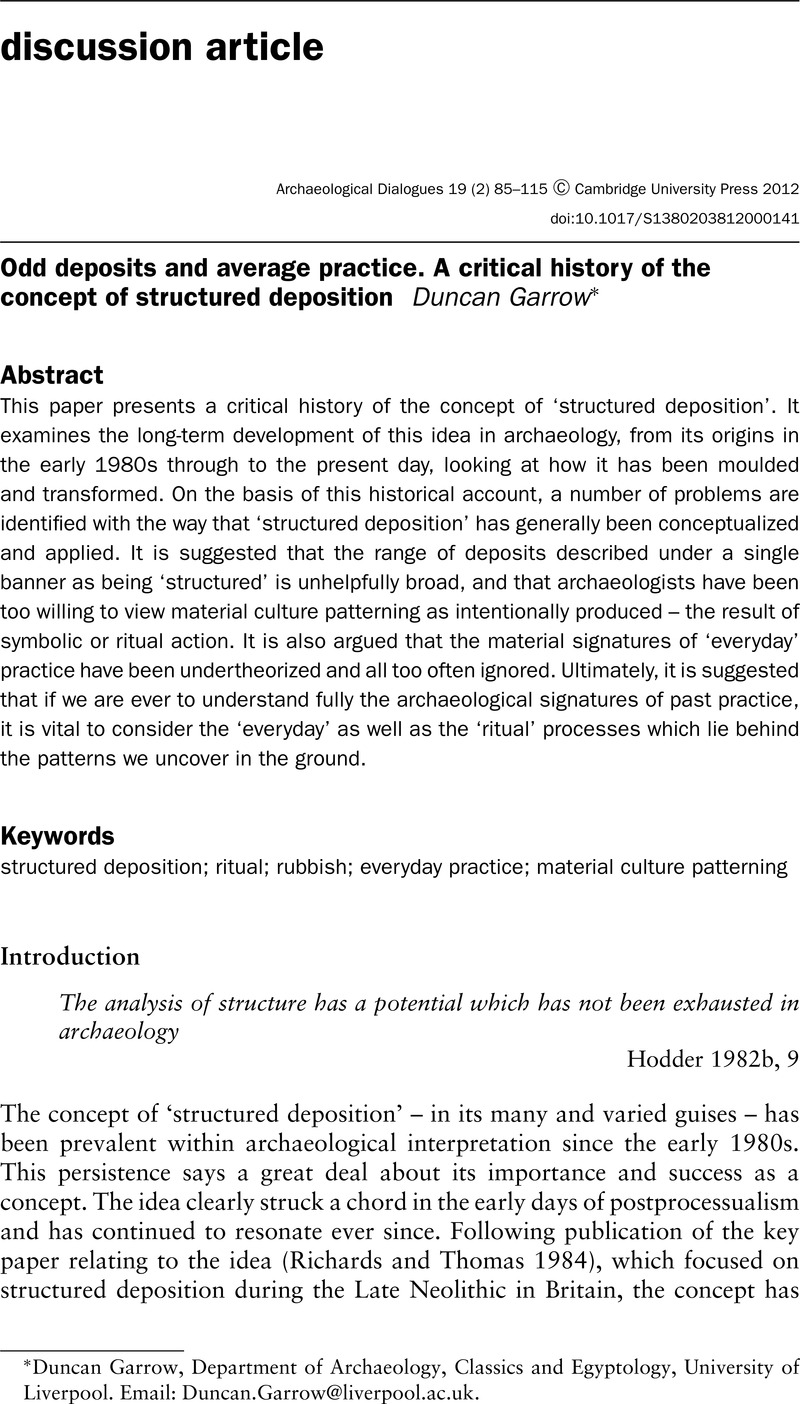Crossref Citations
This article has been cited by the following publications. This list is generated based on data provided by Crossref.
Jervis, Ben
2014.
Middens, memory and the effect of waste. Beyond symbolic meaning in archaeological deposits. An early medieval case study.
Archaeological Dialogues,
Vol. 21,
Issue. 2,
p.
175.
Gordillo, Inés
and
Vindrola-Padrós, Bruno
2017.
Destruction and abandonment practices at La Rinconada, Ambato Valley (Catamarca, Argentina).
Antiquity,
Vol. 91,
Issue. 355,
p.
155.
Newman, Sarah E.
2019.
Rubbish, Reuse, and Ritual at the Ancient Maya Site of El Zotz, Guatemala.
Journal of Archaeological Method and Theory,
Vol. 26,
Issue. 2,
p.
806.
Green, Ellen
2024.
Fragmented analysis, fragmented interpretation: The necessity of integrated faunal and human analysis for identifying and understanding ritual contexts.
Journal of Archaeological Science: Reports,
Vol. 58,
Issue. ,
p.
104697.
Green, Ellen
2025.
LIFE FROM DEATH: MULTI‐SPECIES FERTILITY RITUALS WITHIN A ROMANO‐BRITISH RITUAL SHAFT IN SOUTHERN ENGLAND.
Oxford Journal of Archaeology,
Vol. 44,
Issue. 1,
p.
101.


